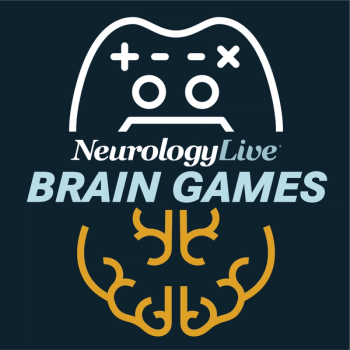
FDA Greenlights Expanded Indication for Vizamyl in Alzheimer Disease Diagnosis
Key Takeaways
- Vizamyl's expanded indication allows for quantification of amyloid burden and therapy monitoring in Alzheimer's disease, enhancing treatment assessment and patient selection for disease-modifying therapies.
- The updated label aligns with revised Alzheimer's Association criteria, recognizing abnormal amyloid PET scans as sufficient for Alzheimer's diagnosis and eliminating prior limitations.
The FDA expands Vizamyl's use for Alzheimer diagnosis and therapy monitoring, enhancing patient care with precise amyloid quantification.
The FDA has approved an expanded indication on GE Healthcare’s PET imaging agent Vizamyl to include both quantification of amyloid burden for patients with suspected Alzheimer disease (AD) and use in therapy monitoring. With the expanded indication, neurologists may better assess treatment response to anti-amyloid agents, select patients for disease-modifying therapy, and rely on objective amyloid PET metrics to guide diagnosis and care.1
A radioactive diagnostic agent otherwise known as flutemetamol F18 injection, Vizamyl was originally approved in 2013 as a way to estimate beta-amyloid (Aß) neuritic plaque density in adult patients with cognitive impairment suspected of AD.2 In the latest update, the tracer will now be used in a variety of different clinical settings, including to help determine whether the level of amyloid plaques has been significantly reduced for anti-amyloid therapy to be stopped.
"The use of quantification in amyloid PET imaging has steadily moved from research to clinical practice, where it can aid in more confident and accurate diagnosis,” Phillip Kuo, MD, PhD, FACR, professor of radiology, section chief of Nuclear Medicine and director of Theranostics at City of Hope National Medical Center, said in a statement.1 "Now quantification can also play a critical role in initiating and monitoring amyloid-targeted therapy for Alzheimer disease and determining when it can be discontinued."
Since the original 2013 approval, the treatment landscape for anti-amyloid therapies–and the need for imaging tools to complement them–has expanded significantly. Aducanumab’s (Aduhelm; Biogen) 2021 approval, while quite controversial, was the mark of the first approved anti-amyloid treatment, specifically focused on soluble and aggregated Aß. Years later, the field saw 2 new therapies–lecanemab (Leqembi; Eisai) and donanemab (Kisulna; Eli Lilly)–join the therapeutic landscape as well.
The expansion of anti-amyloid therapies has represented a paradigm shift–moving from symptomatic treatment toward pathology-targeted disease modification–however, there have been some challenges with the rollout of this class. For one, these agents often come with high costs and thus, patient selection and ensuring access to these medications at the earliest point in patients’ disease course remains critical. In addition, while these therapies have undergone confirmatory phase 3 studies, there are still questions about their real-world clinical effectiveness, especially in those who may be too far progressed in their disease.
READ MORE:
"The inclusion of quantification and removal of the therapy monitoring limitation from the Vizamyl label is good news for healthcare providers and their patients, further enabling timely and appropriate care decisions," Jit Saini, MD, chief medical officer of the Pharmaceutical Diagnostics division at GE Healthcare, said in a statement.1 "These changes pave the way for clinicians to expand their usage of Vizamyl, with meaningful implications for patients and their families— helping provide clearer answers, earlier diagnoses, and enabling more personalized treatment strategies."
The updated label now includes a formal indication for identifying patients eligible for amyloid-targeted therapies and eliminates several prior limitations, including those related to AD diagnosis. In alignment with revised Alzheimer’s Association criteria, an abnormal amyloid PET scan is now recognized as sufficient to support a diagnosis. Additionally, the label no longer restricts use in predicting cognitive decline, reflecting growing evidence that amyloid-positive scans are associated with an increased risk of progression from early mild cognitive impairment to AD dementia.
Vizamyl remains contraindicated in patients with a history of hypersensitivity reaction to Vizamyl or polysorbate 80. The PET imaging tool’s label includes a number of warnings and precautions, including anaphylaxis and other serious hypersensitivity reactions, as well as radiation risk, which is associated with increased risk of cancer. Furthermore, the label warns of image misinterpretation and errors during the estimation of Aß neuritic plaque density. In its supporting clinical trials, the most commonly reported adverse reactions included flushing, increased blood pressure, headache, nausea and dizziness.
REFERENCES
1. FDA approves expanded indications for GE HealthCare’s Vizamyl PET imaging agent for beta amyloid detection, enabling more precise care for Alzheimer’s patients. News release. GE Healthcare. June 24, 2025. Accessed June 24, 2025. https://www.gehealthcare.com/about/newsroom/press-releases/fda-approves-expanded-indications-for-ge-healthcares-vizamyl-pet-imaging-agent-for-beta-amyloid-detection-enabling-more-precise-care-for-alzheimers-patients
2. GE Healthcare Announces FDA Approval of Vizamyl(TM) (Flutemetamol F18 Injection) for Detection of Beta Amyloid. News release. GE Healthcare. October 25, 2013. Accessed June 24, 2025. https://www.fiercebiotech.com/biotech/ge-healthcare-announces-fda-approval-of-vizamyl-tm-flutemetamol-f18-injection-for-detection
Newsletter
Keep your finger on the pulse of neurology—subscribe to NeurologyLive for expert interviews, new data, and breakthrough treatment updates.


































